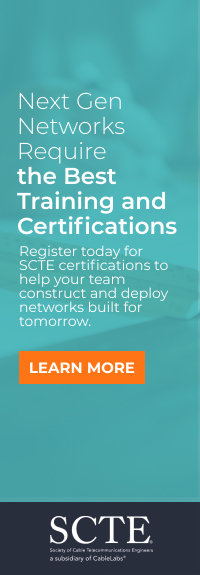Article Index for the July Issue:
July 2025 - IoT & The Device Revolution
July 2025 - IoT & The Device Revolution
Supporting time-sensitive applications
through converged networking and TSN
By: Dave Cavalcanti
» read this article
Drones, GenAI and the Need for Collision Avoidance Communications Protocol
It looks like delivery drones and air taxis are coming fast. As their numbers increase, low-altitude airspace is going to get congested. We need to find a way to avoid collisions. GenAI will likely play a key role in autonomous operation. But, it is not sufficient by itself to prevent collisions. We need a protocol for collision avoidance. Research on this topic has not created a solution. Things are happening too fast to wait for a 6G solution. The best way forward may be for those building the equipment and those planning to use the equipment to come together and develop such a protocol…» read this article
Robots, Relationships, and the Real Fix
for America’s Labor Crunch
By: Elad Inbar
» read this article
Powering Smarter Operations in Buildings
with IoT, Edge AI and Private Networks
By: Bill Dykas
» read this article
Why AI & AR/VR Can Help Aerospace Manufacturers Like Boeing Improve Design and Maintenance of Aircrafts
By: Dijam Panigrahi
» read this article
Satellite Connectivity and the Promise of Standards-Based Integration
By: Greg Pelton
» read this article
How Data Engineering is Powering
Trusted AI in Telecoms
Artificial Intelligence (AI) is no longer a futuristic concept in the telecommunications sector - it is the driving force behind the industry’s transformation. AI is revolutionising how telcos
operate and deliver value, from predictive maintenance and automated service delivery to enabling innovations like IoT services and smart cities. However, this revolution hinges on one
critical factor: data. More specifically, the quality, governance and trustworthiness of the data that powers AI models…» read this article
What you missed at DTW Ignite! 2025
The TM Forum’s DTW Ignite! (DTW) found itself once again in the happiest city on earth, Copenhagen, situated in the peaceful country of Denmark. Compared to prior years, the Bella Center had taken on a new identity. DTW’s main stage, which hosted the opening keynotes, now found itself in the center of the event in a more open format, allowing for a better, more relaxed, and accessible experience. All main stages utilized this model, allowing for a quick, embarrassment-free exit if all the Artificial Intelligence (AI) hype became too much to bear…» read this article
Redefining Telecom: Monetization
Strategies in a Cloud-Driven Era
By: Binish Patel
» read this article
Why DIY IoT Could Derail Your Digital Strategy
By: Jeff Noska
» read this article
Letter from the Editor - July 2025
The proliferation of connected devices permeates every aspect of our daily lives, and we may not even notice. Sure, we may know the PC on our desk, watch on our wrist, or the doorbell on our home may be connected to the internet. You may even have a connected device implanted in your body. But the explosion in IoT connected devices encompasses even more than that. There is an IoT revolution underway. Recent estimates put the number of IoT connected devices at just under 20 billion. The cities we live in, streets we drive upon, cars we drive in, and the buildings and factories in which we work are all connected, and the momentum doesn’t show any signs of slowing…» read this article
IT & Telecom Industry News
This month’s industry news roundup highlights a surge of groundbreaking innovation across IoT, AI, cloud, and communications sectors. From ZTE’s cross-brand robot collaboration, IonQ’s billion-dollar acquisition, and AT&T’s advancements in emergency communications, to HP’s AI-powered 3D video solution, Pipeline's got you covered with everything relevant in technology. The month’s top industry news stories are summarized below. To view breaking news in real-time, visit Pipeline’s News Center, follow Pipeline on social media, and subscribe to receive our weekly industry enterprise and communications technology news summary…» read this article

















